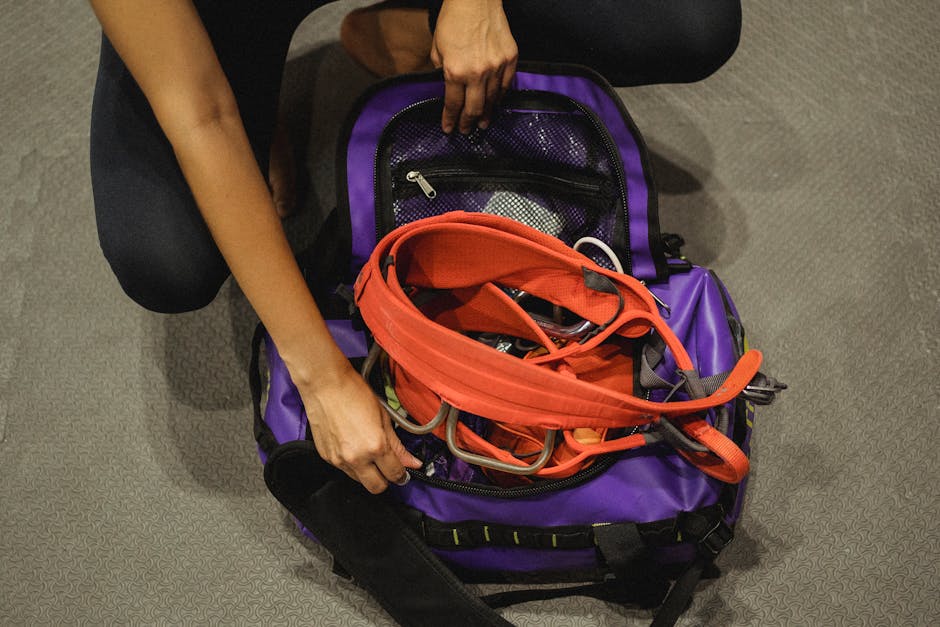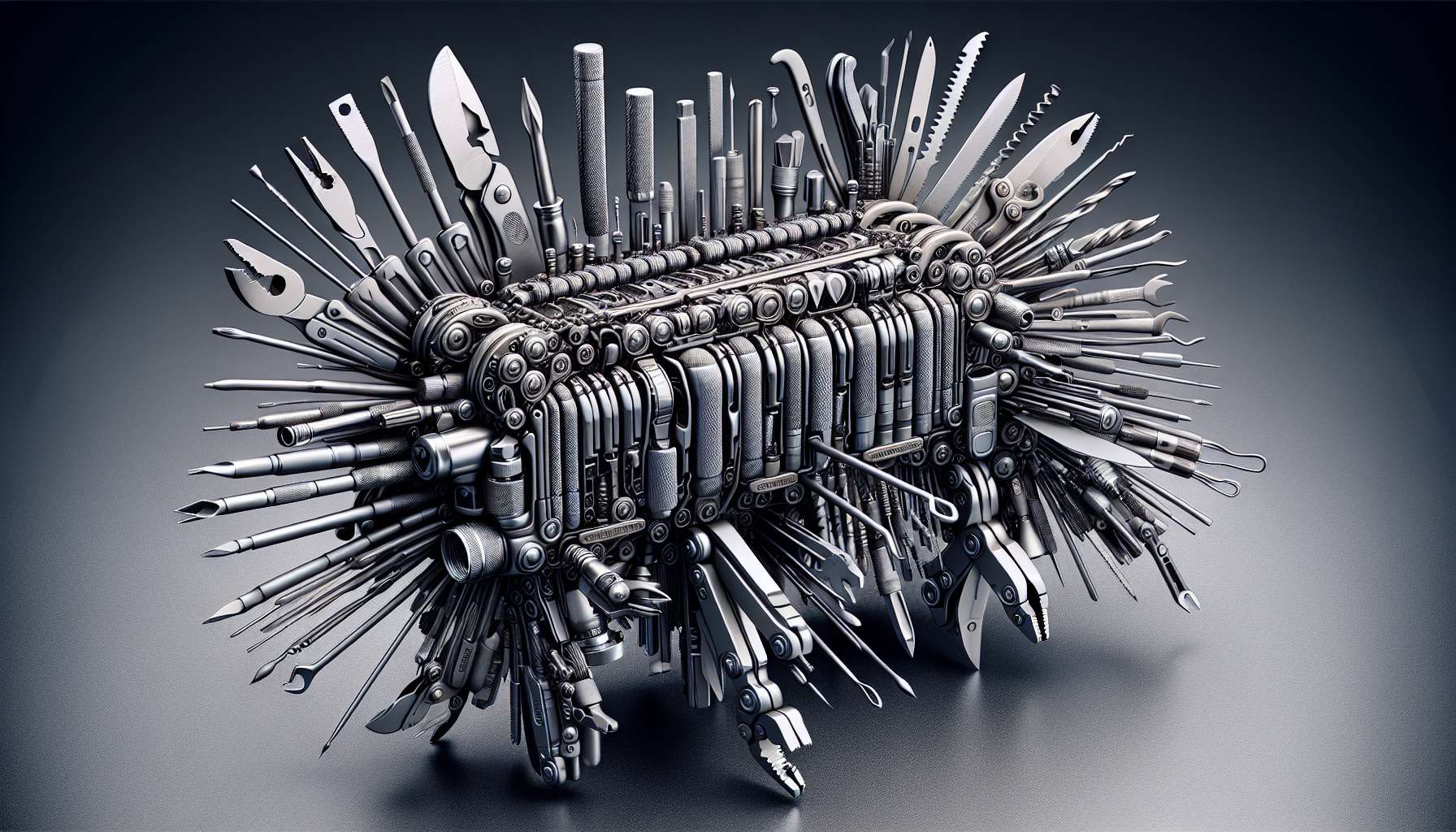The Ultimate Guide to Climbing Ropes
Are you an adrenaline junkie seeking the thrill of scaling great heights? Or perhaps youre an outdoor enthusiast looking to challenge yourself with a new adventure? Whatever your motivation, climbing ropes play a crucial role in ensuring safety and success in the world of rock climbing, mountaineering, and other vertical pursuits. In this comprehensive guide, we will delve into the fascinating world of climbing ropes, exploring their history, types, uses, and importance in the realm of outdoor sports.
The Evolution of Climbing Ropes
Climbing ropes have come a long way from their humble beginnings. In ancient times, early climbers used simple ropes made of natural fibers like hemp or manila. These primitive ropes lacked the strength and durability of modern synthetic materials, making climbing a risky endeavor. Fast forward to the present day, and we have a wide array of technologically advanced ropes designed to withstand high impact forces and provide maximum safety for climbers.
One of the key milestones in the evolution of climbing ropes was the introduction of kernmantle construction in the mid-20th century. This innovative design consists of a core (kern) protected by a durable sheath (mantle), combining strength and abrasion resistance. Today, climbing ropes are made from materials such as nylon, polyester, and aramid fibers, offering superior strength, elasticity, and performance.

Types of Climbing Ropes
When it comes to choosing a climbing rope, there are several factors to consider, including diameter, length, and dynamic versus static properties. Dynamic ropes are designed to stretch and absorb the impact of a fall, while static ropes are used for rappelling and hauling equipment. Additionally, climbing ropes come in different diameters, ranging from thin, lightweight ropes for sport climbing to thicker, more durable ropes for traditional or alpine climbing.
Single ropes are the most common type of climbing rope, used for straightforward routes where the climber ascends in a single strand. Double ropes are typically used in trad climbing or alpine terrain, offering increased security by allowing two ropes to be clipped independently. Finally, twin ropes are used as a pair, offering redundancy and safety in challenging environments.
Climbing Rope Maintenance and Care
Proper maintenance and care of climbing ropes are essential to ensure their longevity and safety. Regularly inspect your rope for signs of wear, such as fraying, flat spots, or discoloration. Avoid exposing your rope to harsh chemicals or abrasives, and store it in a cool, dry place away from direct sunlight. It is also recommended to wash your rope periodically with mild soap and water to remove dirt and debris that can weaken the fibers.
When storing your rope, coil it loosely in a rope bag or tarp to prevent kinks and tangles. Avoid stepping on your rope or allowing it to come into contact with sharp objects that could damage the sheath. Remember, your climbing rope is your lifeline, so treat it with care and respect to ensure your safety on the rock.

The Importance of Climbing Ropes in Safety
When it comes to climbing, safety is paramount. Climbing ropes serve as a crucial piece of equipment that protects climbers from falls and provides a means of communication between partners. A properly chosen and maintained climbing rope can mean the difference between a successful ascent and a dangerous accident.
Modern climbing ropes are designed to stretch and absorb the energy of a fall, reducing the impact on the climber and the anchor. The dynamic properties of climbing ropes allow them to elongate under stress, dissipating the force of a fall and preventing injury. Additionally, the sheath of a climbing rope acts as a protective barrier, shielding the core from damage and abrasion.
Choosing the Right Climbing Rope for Your Adventure
With a myriad of options available in the market, selecting the right climbing rope can be a daunting task. Consider factors such as the type of climbing you will be doing, the diameter and length of the rope, and your personal preferences regarding weight and handling. If you’re a beginner climber, opt for a versatile and durable single rope that can handle a variety of routes.
For more experienced climbers tackling challenging terrain, a thinner and lighter rope may be preferable to reduce weight and drag. Consider factors such as impact force, elongation, and UIAA fall rating when choosing a climbing rope for your next adventure. Consult with experienced climbers or outdoor gear specialists to find the perfect rope for your specific needs.
Expert Opinions on Climbing Ropes
According to renowned climber Alex Honnold, “Choosing the right climbing rope is essential for a successful ascent. I always opt for a lightweight and durable rope that can handle the demands of free soloing and big wall climbing.” Honnold recommends thorough research and testing before committing to a climbing rope to ensure its reliability and performance in the field.
In a recent interview with professional climber Sasha DiGiulian, she emphasized the importance of safety and trust in your climbing equipment. DiGiulian stated, “Your climbing rope is your lifeline, so invest in a high-quality rope that you can rely on in any situation. Don’t compromise on safety when it comes to choosing the right gear for your climbs.”
Common Misconceptions about Climbing Ropes
One common misconception about climbing ropes is that thicker ropes are always safer than thinner ones. While thicker ropes may offer increased durability and longevity, they can also be heavier and more cumbersome to handle. Thinner ropes, on the other hand, are lighter and more versatile, making them ideal for technical climbing and alpine routes.
Another misconception is that all climbing ropes are the same, regardless of brand or specifications. In reality, different ropes are designed for specific purposes and environments, so it’s essential to choose a rope that suits your climbing style and preferences. Consult with experienced climbers or gear experts to determine the best rope for your needs.
Conclusion: The Vital Role of Climbing Ropes in Outdoor Pursuits
In conclusion, climbing ropes are a fundamental component of outdoor sports like rock climbing, mountaineering, and alpine climbing. These versatile and durable ropes provide safety, security, and peace of mind to climbers as they navigate challenging terrain and push their limits. By understanding the history, types, maintenance, and importance of climbing ropes, you can make informed decisions when selecting the right gear for your next climbing adventure.
Remember, your climbing rope is more than just a tool – it is your lifeline to the vertical world, a symbol of trust and partnership between climbers. Treat your rope with care and respect, and it will serve you faithfully on countless adventures to come. So, whether you’re a seasoned climber or a novice enthusiast, embrace the thrill of the climb and trust in the strength of your climbing rope to guide you to new heights.




